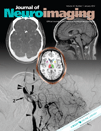Stroke Fast Track Reduces Time Delay to Neuroimaging and Increases Use of Thrombolysis in an Academic Medical Center in Thailand
Funding sources: None.
J Neuroimaging 2012;22:53-57.
ABSTARCT
Delays between hospital arrival and neuroimaging prevented patients from receiving thrombolysis. We report impact of Stroke Fast Track (SFT) on time to imaging, and rates of recombinant tissue plasminogen activator (rt-PA) in eligible patients. Characteristics, time intervals, and rates of rt-PA were evaluated in 464 patients with suspected acute stroke within 7 days (2005–2006). Complete time intervals were available on 380. Median times between emergency room arrival, brain computerized tomography (CT), and CT results were 25 and 45 minutes, respectively, for patients arriving <3 hours from onset, 40, and 65 minutes for those arriving >3 hours, and 35 and 60 minutes for all patients, which is significantly shorter than 2.5 hours to CT in 2004, prior to SFT (P < .0001). Although not different in time to first physician, patients arriving >3 hours had longer times to CT and CT results (P < .001). Overall, 5.5% of ischemic stroke patients received intravenous rt-PA, including 27.1% of those arriving within 3 hours, which represented 100% of all eligible patients, compared with 0% in 2004. SFT reduced time delay in neuroimaging and increased use of rt-PA in Thailand. Continuous quality improvement is needed to achieve best results in each setting, and to insure optimal care for acute stroke patients.




